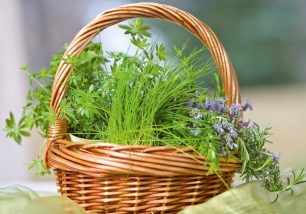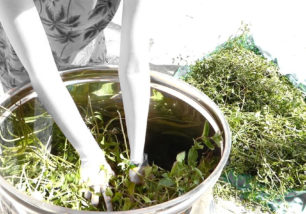THYME ESSENTIAL OIL: USES AND PROPERTIES
antiseptic actionaromatic plantsbalsamic actiondigestive actionessential oilsteam distillation
Thyme is part of the family Lamiaceae, like Mint, Basil, Lavender and many other species widely known because of their perfume and flavor.
This characteristic is due to the presence in the leaves of structures secreting essential oil.
The name Thyme generally refers to the species Thymus vulgaris, but in all Europe (especially in the Mediterranean areas) there is also another species that grows wild, Thymus serpillus, with similar features and properties.
There are different hypothesis regarding the origin of the name. It may come from the Greek verb “Theyn” = to perfume or “Thumon” = taken in sacrifice. In fact in ancient Greece, it was customary to burn heads of thyme in propitiatory bonfires.
Another possible derivation is from the Egyptian word “Tym”, that refers to a plant used to wash the bodies to be embalmed.
The Thyme plant looks like a small bush, with a woody base and small gray-green leaves. The essential oil is obtained by steam distillation of the aerial parts of the plant, harvested during flowering.There are many uses that can be made of this essential oil.
USES AND PROPERTIES:
Against infections and cough: Diverse studies have shown that, thanks to its constituents of carvacrol and thymol, Thyme essential oil is one of the more effective essences in inhibiting bacterial proliferation, especially that of Gram +.
The essence also has the ability to facilitate the elimination of phlegm from the bronchus, being particularly helpful against respiratory tract affections. To benefit from this activity it is possible to carry out fumigations, diluting a few drops (2-3) of E.O in a pot of hot water.
Gardening: Carvacrol and Thymol have been shown to be capable of killing larvae of different insects species. Dilute one drop of E.O. in a teaspoon of alcohol, and then add the mixture to the water for watering the plants can be helpful against infestations.
Beauty care of face, body and hair: A study was carried out to value the efficacy of 10 different essential oils in inhibiting the bacteria responsible for acne (Propionibacterium acnes). Thyme proved to be the most effective, working at a lower dilution.
For this purpose just add 1-2 drops of Thyme E.O. to 100 g/100 ml of neutral face cream or vegetable oil and apply on your face, avoiding contact with eyes and mucous membranes. Thanks to its stimulating activity on capillaries it can also be used to improve blood circulation, both of the legs and of the scalp.
It is possible to prepare an invigorating body massage oil mixing coconut or almond oil with thyme essential oil, with a maximum percentage of 1% for this. To benefit from its activity on the scalp, just add 4/5 drops of E.O. in a tablespoon of shampoo (about 15 ml) and wash your hair as usual. Thanks to its anti-inflammation properties it is a good choice, in combination with Wintergreen or Rosemary E.O., to relieve rheumatic and joint pains, always diluted in another vegetable oil.
Food seasoning: Thyme leaves are traditionally used to flavor meat and fish. Since there are many different varieties of this plant, with different organoleptic features, it is possible to use thyme with many second courses. Adding the leaves to legumes during the cooking will make them easier to digest. The same is true if we use olive oil flavored with thyme E.O. to season the legumes after cooking.
Another great alternative as a seasoning is Thyme flavored Butter, for first courses or fish.
Remember that essential oils are extremely concentrated compounds and even a small amount may cause side effects. For internal use always consult an expert or your doctor.
Be careful in case of topical application too: essential oils contain small-sized molecules and are easily absorbed by our skin. An excessive amount may cause dermatitis. Do not use in case of injured skin and avoid contact with mucous membrane and eyes because they may cause irritation.
More information on:
Thyme (Thymus vulgaris): cultivation, transformation and uses
Other articles that may interest you:
Rosemary essential oil: uses and properties
Basil essential oil in alchemy
How to make homemade essential oils
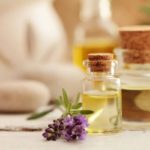 ESSENTIAL OILS: WELLNESS IN HOME
ESSENTIAL OILS: WELLNESS IN HOME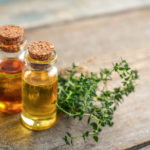 THYME ESSENTIAL OIL: USES AND PROPERTIES
THYME ESSENTIAL OIL: USES AND PROPERTIES AROMATHERAPY: HOW TO CHOOSE AN ESSENTIAL OIL
AROMATHERAPY: HOW TO CHOOSE AN ESSENTIAL OIL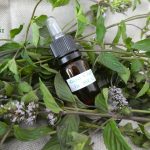 HOW TO DISTILL MINT
HOW TO DISTILL MINT AROMATHERAPY: HISTORY
AROMATHERAPY: HISTORY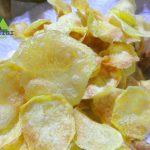 POTATO CHIPS WITH ROSEMARY AROMATIC WATER
POTATO CHIPS WITH ROSEMARY AROMATIC WATER ROSEMARY ESSENTIAL OIL: CULTIVATION AND PRODUCTION
ROSEMARY ESSENTIAL OIL: CULTIVATION AND PRODUCTION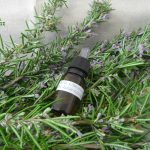 HOW TO DISTILL ROSEMARY
HOW TO DISTILL ROSEMARY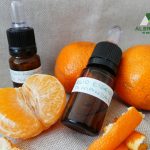 HOW TO DISTILL TANGERINE PEEL
HOW TO DISTILL TANGERINE PEEL NEEM OIL, FROM THE PLANT OF GOOD HEALTH
NEEM OIL, FROM THE PLANT OF GOOD HEALTH HERBAL TEAS, INFUSIONS AND DECOCTIONS: THE DIFFERENCES AND METHODS OF PREPARATION
HERBAL TEAS, INFUSIONS AND DECOCTIONS: THE DIFFERENCES AND METHODS OF PREPARATION HOW TO MAKE HOMEMADE ESSENTIAL OILS
HOW TO MAKE HOMEMADE ESSENTIAL OILS HEALTHY HAIR WITH AROMATIC PLANTS
HEALTHY HAIR WITH AROMATIC PLANTS THE GOOD NIGHT PLANTS
THE GOOD NIGHT PLANTS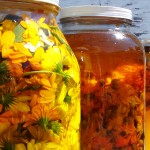 OLEOLITES: THE POWER OF HERBS IN OIL
OLEOLITES: THE POWER OF HERBS IN OIL ENFLEURAGE: ANCIENT TECHNIQUE TO EXTRACT ESSENCES FROM FLOWER PETALS
ENFLEURAGE: ANCIENT TECHNIQUE TO EXTRACT ESSENCES FROM FLOWER PETALS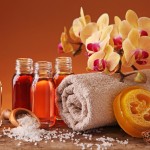 ESSENTIAL OILS AND ECOLOGICAL DETERGENTS FOR HOUSE CLEANING
ESSENTIAL OILS AND ECOLOGICAL DETERGENTS FOR HOUSE CLEANING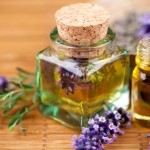 OIL FOR STRENGTHENING HAIR
OIL FOR STRENGTHENING HAIR SCENTED BAGS WITH DRIED HERBS AND ESSENTIAL OILS
SCENTED BAGS WITH DRIED HERBS AND ESSENTIAL OILS PURIFYING AND CLEANSING HERBAL TEAS DO-IT-YOURSELF
PURIFYING AND CLEANSING HERBAL TEAS DO-IT-YOURSELF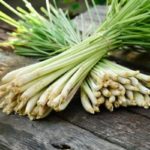 LEMONGRASS: ESSENTIAL OIL TO FIGHT TUMORS
LEMONGRASS: ESSENTIAL OIL TO FIGHT TUMORS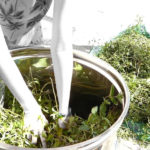 MINT ESSENTIAL OIL: CULTIVATION AND PRODUCTION
MINT ESSENTIAL OIL: CULTIVATION AND PRODUCTION CITRUS FRUITS AND ALZHEIMER’S DISEASE: NEW DISCOVERIES
CITRUS FRUITS AND ALZHEIMER’S DISEASE: NEW DISCOVERIES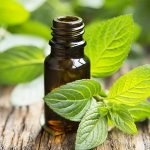 MINT ESSENTIAL OIL: USES AND PROPERTIES
MINT ESSENTIAL OIL: USES AND PROPERTIES

